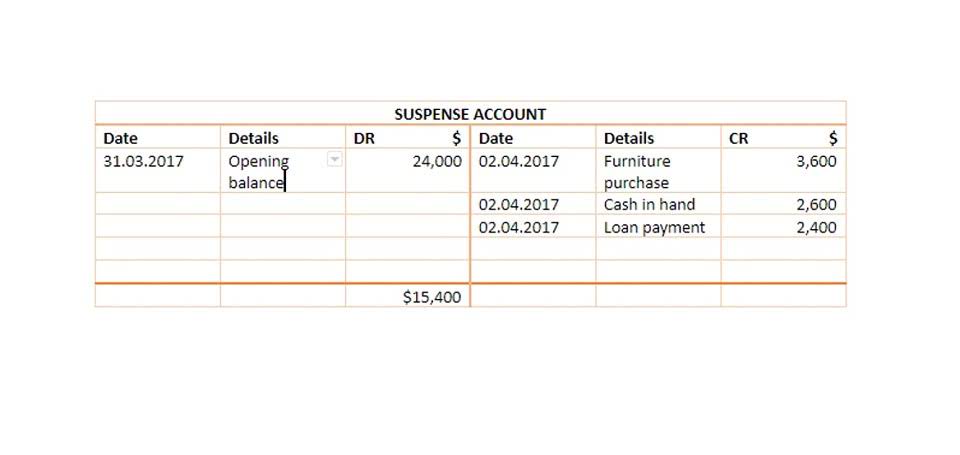
A purchase journal is a special form of accounting log used by a company to track and record orders and purchases. Once an order has been received, a company (assisted by an invoice document) will post the transaction to the purchase log. Purchase logs typically reflect a debit to the ‘Payments’ account, which represents inventory, and a credit to the ‘Accounts Payable’ account, which represents the supplier. As you can see, the first transaction is posted to Baker Co., the second one to Alpha Co., then Tau Inc., and then another to Baker Co. On the date each transaction is posted in the sales journal, the appropriate information would be posted in the subsidiary ledger for each of the customers.
- On the date each transaction is posted in the sales journal, the appropriate information would be posted in the subsidiary ledger for each of the customers.
- The sales invoice number is entered so the bookkeeper could look up the sales invoice and assist the customer.
- The company can also review and verify the inventory on October 12, 2020, by comparing the inventory in the account record with the physical inventory count.
- There are two methods or systems to account for inventory including the perpetual system and periodic system.
- He had a history of right kidney nephrectomy for retroperitoneal liposarcoma and transurethral resection of a bladder tumor.
- And all you need to enter are the date, name of suppliers, supplies accounts, invoices identification, description of transactions, and amounts.
Altogether, the three individual accounts owe the company $2,775, which is the amount shown in the Accounts Receivable control account. It is called a control total because it helps keep accurate records, and the total in the accounts receivable must equal the balance in Accounts Receivable in the general ledger. If the amount of all the individual accounts receivable accounts did not add up to the total in the Accounts Receivable general ledger/control account, it would indicate that we made a mistake.
3 Analyze and Journalize Transactions Using Special Journals
A purchase journal, also referred to as a purchase book or a purchase day book, is a specialized form of accounting log that assists a business in tracking all orders that have been purchased on credit or on account. For an order to be considered on credit or on account, it must have been purchased using vendor credit or placed on a sort of running tab; essentially, on credit and on account purchases work similar to credit card banking. Purchase journals are often found in a manual accounting system where high-volume orders should be prevented from individually filling the ledger. Cash purchases are not typically tracked in a purchase journal, but are often found in a separate cash payment journal.

Finance Strategists is a leading financial literacy non-profit organization priding itself on providing accurate and reliable financial information to millions of readers each year. Since Purchase of goods is an expense, so, Purchases A/c would be debited, because according to the Rules of Debit and Credit, an expense A/c is debited . At Finance Strategists, we partner with financial experts to ensure the accuracy of our financial content. The company can also review and verify the inventory on October 12, 2020, by comparing the inventory in the account record with the physical inventory count. This is a big advantage of the perpetual inventory system as the company can investigate immediately if there is any variance between the physical count and the account record. Match each of the transactions in the right column with the appropriate journal from the left column.
Which Journal?
Selling on credit always requires a debit to Accounts Receivable and a credit to Sales. Because every credit sales transaction is recorded in the same way, recording all of those transactions in one place simplifies the accounting process. Note there is a single column for both the debit to Accounts Receivable and the credit to Sales, although we need to post to both Accounts Receivable and Sales at the end of each month.

The first is a debit from an expense account and the second is a payment to the company or service provider. A general journal tracks transactions that do not fall into one of the four categories. An accounting team may use other specialty journals to track certain types of transactions. A purchase journal is a special journal that uses to record all of the transactions related to purchases on credit. The posting reference would be to indicate that we had entered the amount in the accounts payable subsidiary ledger (Figure 7.29).
What is Purchase Journal and How Does it Work?
You should update your purchases journal as often as necessary to reflect the most current information. This may be daily, weekly, or monthly, depending on the type of business you run and the products and services you offer. The balance in this list is compared with the balance in the general ledger accounts payable account. Therefore, the amount column represents a credit to accounts payable and a debit to purchases at the full invoice price. Circumstantially, a company may additionally detail the payment due date, the invoice date, a description of the products received, the status of each purchase and applicable discount periods. Individual items that have been purchased in small amounts and with other items are normally not recorded in a purchase journal; the amount of money owed to the supplier or vendor is also not tracked.
Bill targets land purchases by ‘foreign adversaries’ near Nebraska missile silos – Rapid City Journal
Bill targets land purchases by ‘foreign adversaries’ near Nebraska missile silos.
Posted: Sat, 09 Mar 2024 08:00:00 GMT [source]
The entries in this journal are made based on the invoice received from the supplier on the purchase date. The amount of detail provided in a purchases journal is determined by the type of purchase and products received. Individual items are not usually recorded if they are small amounts and purchased with other items. Neither does the purchases journal track the amount of money owed on account to a supplier. Generally, a purchase log will describe the date on which the order was placed, the name of the supplier and the invoice number. We enter all cash received into the cash receipts journal, and we enter all cash payments into the cash disbursements journal, sometimes also known as the cash payments journal.
The total of all of the cash disbursements for the month would be recorded in the general ledger Cash account (Figure 7.27) as follows. Note that the information for both the cash receipts journal and the cash disbursements journal are recorded in the general ledger Cash account. When a businessman places an order for goods that he needs, the seller of the goods makes out an invoice.

